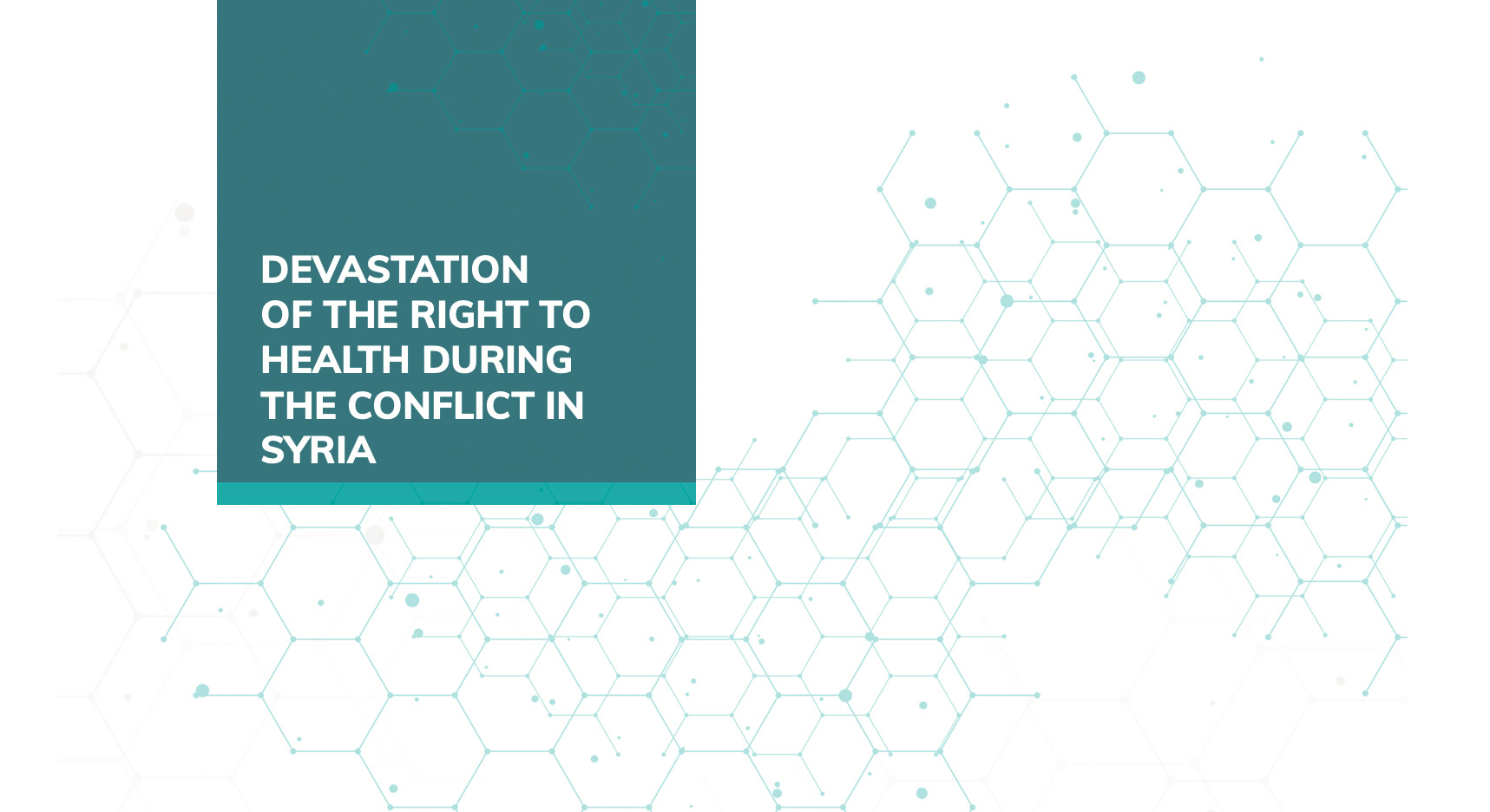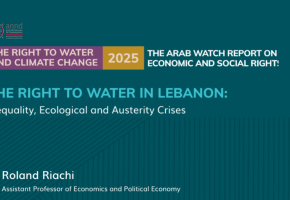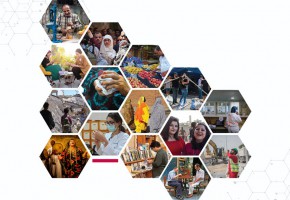
Devastation of the Right to Health during the Conflict in Syria
This research is a part of the Arab Watch Report 2023 on the right to Health.
Devastation of the Right to Health during the Conflict in Syria - Syrian Center for Policy Research
Please click here to download the full report.
Introduction
The health sector lies at the heart of every political, social, and economic system that governs a country. The sector has two major interlinked components, the health system and the health outcome or population health (WHO, 2008). A healthy population and an effective, efficient, just, and accountable health system are vital goals of the sustainable development paradigm that is based on empowering people’s capabilities and functions. In addition to external factors such as the geopolitical situation, the health system and its outcome are formed by key determinants (WHO, 2008), including: the power structure and political system; the social relations and norms; the economic performance and status of living conditions; environmental conditions and demographic characteristics.
This paper is written as part of the Arab Watch Report on Economic and Social Rights 2023 on the Right to Health. It aims to assess the right to health during the conflict in Syria. The paper uses the political economy approach (Cohn & Hira 2020) to deepen the understanding of power relations in conflicts through analyzing the context of war, mapping the key actors, analyzing the policies and interventions, and assesses the impact of different factors on populations’ capabilities (as per the capabilities approach, developed by Sen 1999). It integrates the political, social, and economic spheres in the time of war to diagnose the complex dynamics of the conflict.
This paper summarizes the disastrous health outcomes, identifies the key actors and their policies that affect population health and health system, and diagnoses the social determinants of health in the conflict context. In the context of the conflict, the warring actors’ policies create dynamics that institutionalize conflict and weaponize health systems to dominate power and subordinate people and society. Finally, it provides recommendations to counter the conflict dynamics and mitigate the negative impacts on public health.
The report relies on several surveys that have been conducted by the Syrian Center for Policy Research (SCPR) in the whole of Syria, the population status survey 2014, socioeconomic surveys 2020 and 2021, and citizenship surveys 2022. These surveys used participatory approaches with the local community and comprised in-depth interviews with key informants. Also, this paper uses the monthly SCPR Consumer Prices surveys 2020-2022; the SCPR contribution to the Lancet-AUB Commission on Syria; and a background paper on Syrian Conflict and Health Capabilities. The paper also uses relevant secondary data and literature from different sources, cited throughout the report.
The intractable catastrophic conflict in Syria reflects a critical failure of international, national, and local mechanisms to enforce the right to protect, as millions of Syrians have been killed, injured, kidnapped, tortured, displaced, and deprived from basic rights. The conflict has squandered massively people’s rights, capabilities, and options. This has been associated with a severe distortion of institutions and socioeconomic and environmental systems. The conflict also has dangerous effects for the region and the whole world such as the aggravation of transnational conflict economies, identity politics and extremism, oppression and unaccountable political powers, normalization of grave human rights violations, and struggles in the Security Council.
The intractable armed conflict has fragmented the geography of Syria between several local, regional, and international actors. This fragmentation resulted in the creation of institutions highly dependent on violence; as the conflict became the source of power, resources, and incentives. These institutions negatively affected the overall health system; including hampering access to services and medications; perpetuating pervasive discrimination; weakening healthcare capacity; causing the destruction of health infrastructure, including the targeting of hospitals and Healthcare Workers (HCWs); and triggering the deterioration of the Syrian pharmaceutical industry (Fouad et al. 2017; SCPR 2020).
COVID-19 is a new factor that damaged public heath directly as the confirmed cases and related deaths increased substantially, and the pandemic caused the further deterioration of the socioeconomic situation for Syrians across the country. Moreover, the earthquake in February 2023 added a new level of suffering for Syrians. The catastrophic impacts of this earthquake were not limited to physical and human losses but extended to impact Syria's economic, social, and political structures.
Syrian Center for Policy Research
Please click here to download the full report.
This research is a part of the Arab Watch Report 2023 on the right to Health.
Recent publications

Neoliberalism and Feminist Discourse: Between Assimilation and Resistance in the Arab Context

The Right to Water in Lebanon: Inequality, Ecological and Austerity Crises - Roland Riachi
Related publications

